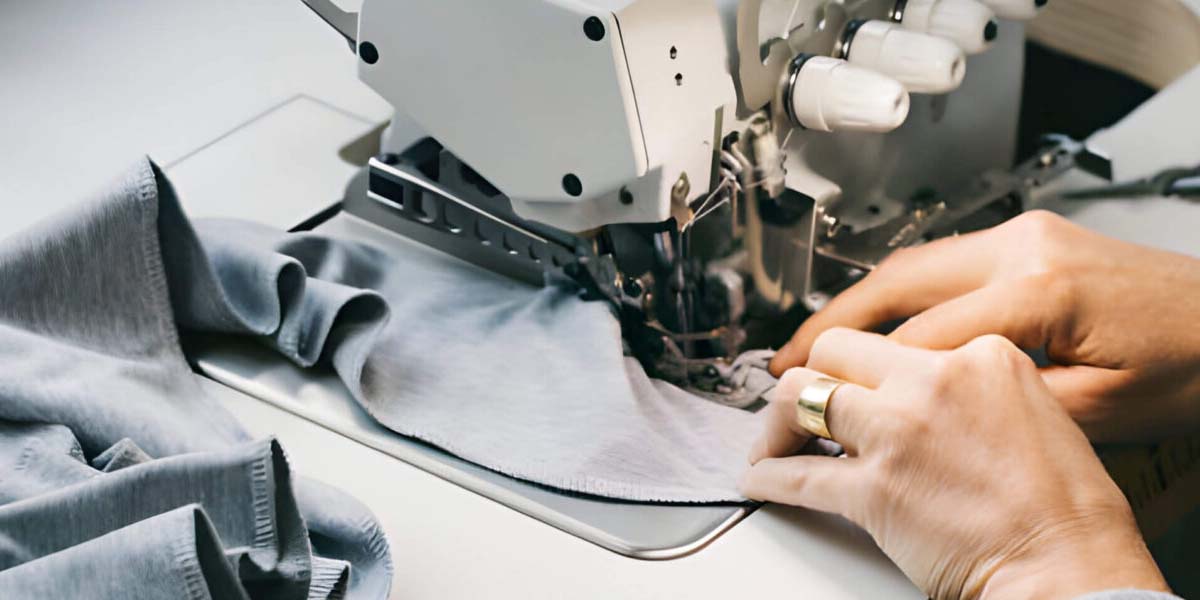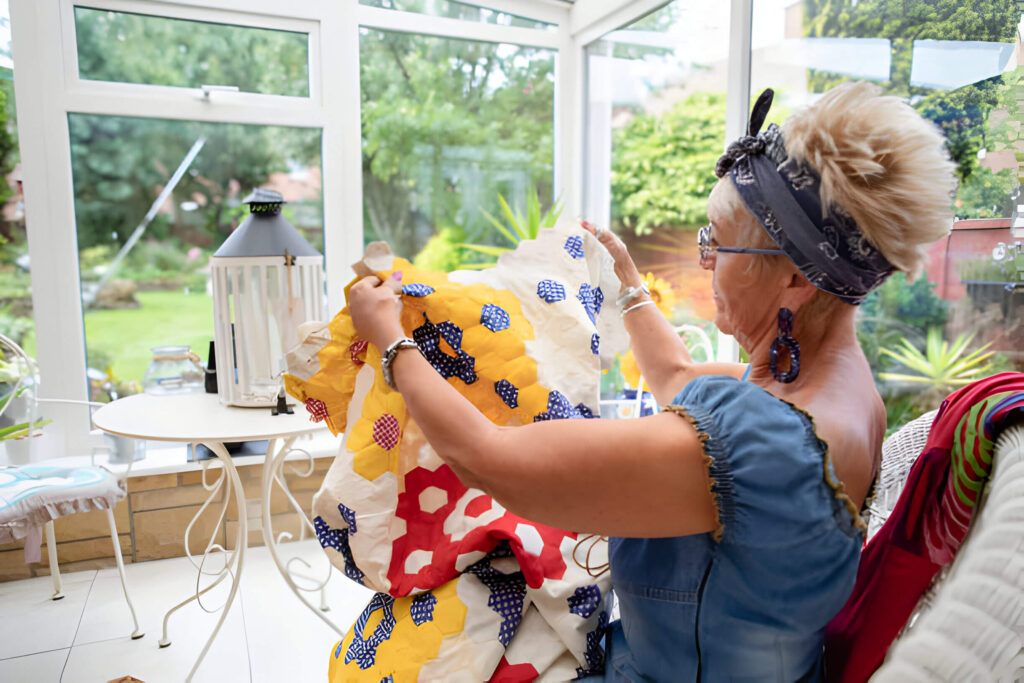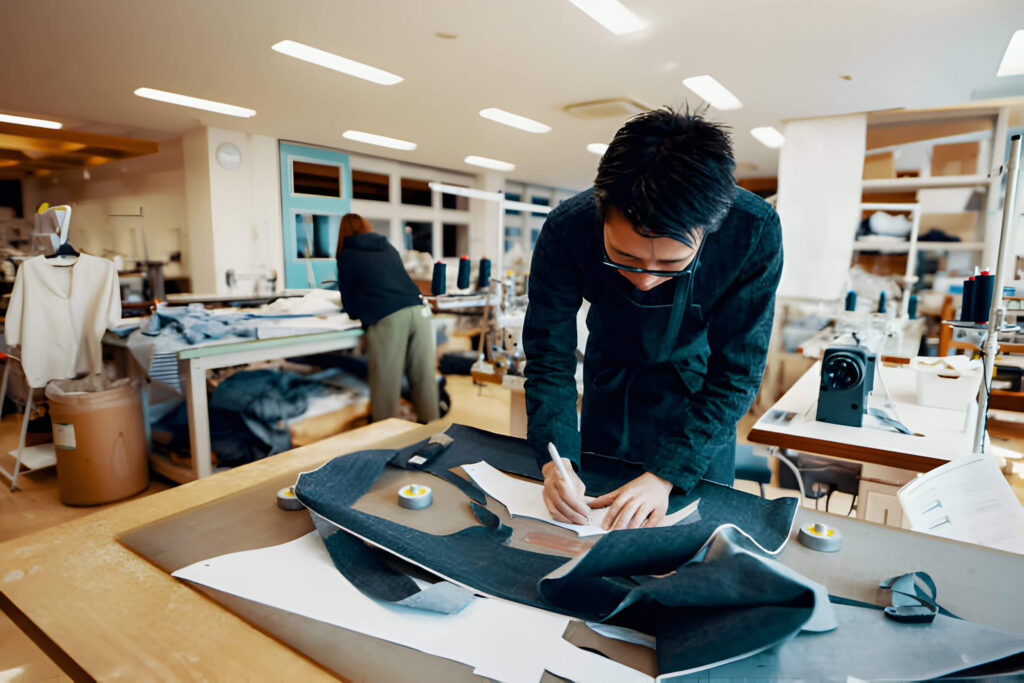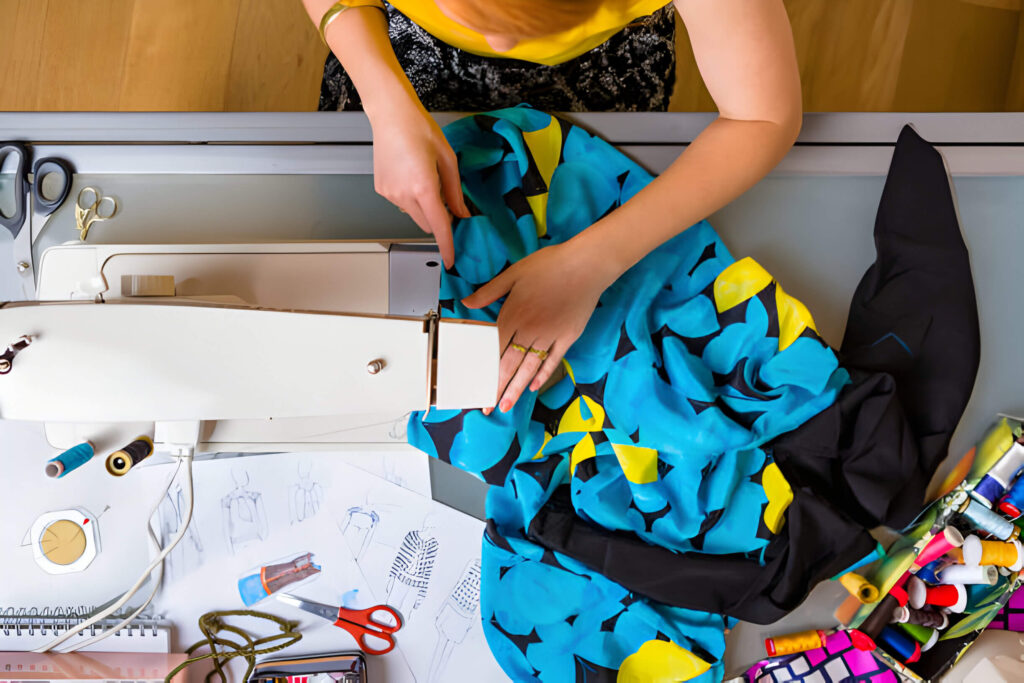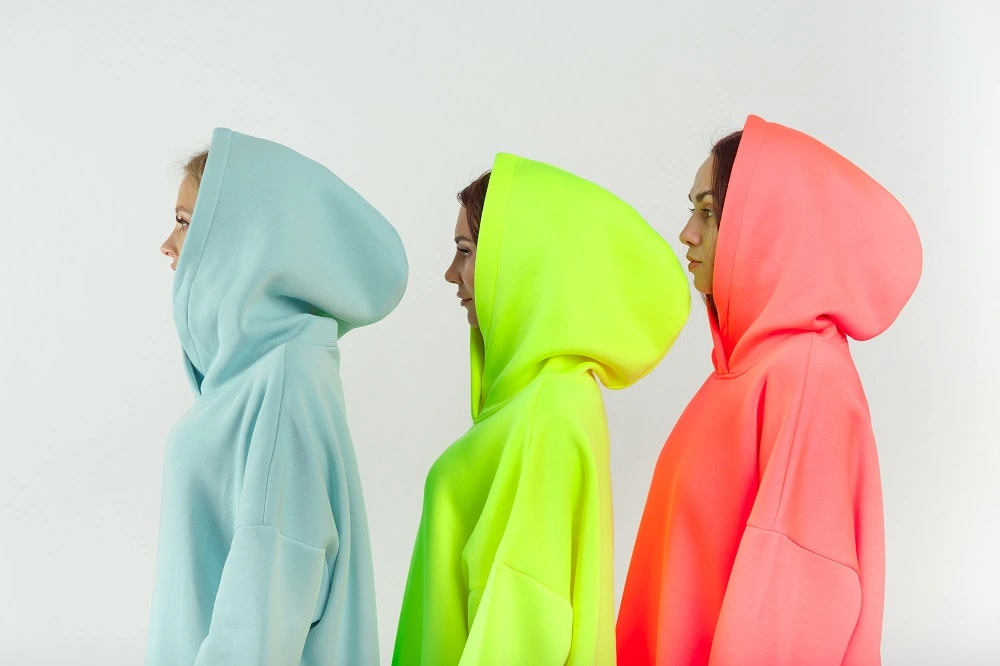Have you ever pictured yourself launching your clothing line? The fashion world is hot right now, and you can turn your ideas into reality with the right info. This blog is your one-stop shop for everything you need to know on how to start a clothing brand in 2025. We’ll break it down from finding your perfect market niche to choosing a reliable clothing manufacturer. So buckle up and get ready to bring your fashion dream to life!
How To Start A Clothing Brand In 10 Simple Steps
Launching a clothing brand can be gratifying and satisfying, but it also presents obstacles. For assistance in making a clothing brand, review our guide detailing the ten essential steps to follow.
Step 1: Understand Your Market
Understanding your target market is crucial when creating and manufacturing clothing. This involves researching to understand the wants, preferences, and buying behaviours of your future customers. You must find chances and areas of need in the market and create products that will connect with your desired demographic. Engaging in research before developing and manufacturing clothing can assist in making well-informed choices and enhancing the likelihood of achieving business success.
- Determine who your audience is. Begin by identifying the particular individuals you aim to target with your apparel. This could depend on age, gender, location, interests, or income level.
- Carry out surveys and interviews. Contact potential clients and inquire about their preferences for clothing and buying behaviors. Utilize online surveys, face-to-face interviews, or focus groups for collecting this information.
- Examine the patterns in the market. Use Google Trends to analyze current fashion trends and changes in the market to uncover potential opportunities and obstacles. This can assist you in developing products that meet consumer expectations.
- Keep an eye on your competition. Monitor your competitors’ actions closely, especially their products, pricing, marketing, and distribution strategies. This can assist you in distinguishing your products and preventing typical errors.
Step 2: Make a Business Plan
A business plan is essential for starting an apparel brand. It is a written paper detailing the objectives, strategies, and steps for your business. A carefully developed business plan can assist you in sharing your vision with potential investors, partners, and customers. It also acts as a guide for the expansion and progress of your company. Ensure that your business plan contains these essential elements:
- Executive Summary: A concise summary of your business, outlining your mission, vision, and key objectives.
- Market Analysis: This part should include a thorough investigation of your target market, such as consumer demographics, preferences, and purchasing habits within the fashion industry.
- Unique Selling Points: What distinguishes your clothing brand from your rivals? Unique aesthetics, sustainable materials, or a social or environmental mission may be the reasons behind it.
- Production And Distribution: Detail your production process, incorporating your sourcing, manufacturing, and logistics strategies. It should also include details on your distribution channels and your strategy for reaching customers.
- Financial Projections: Incorporating income, costs, and financial performance. This can assist you in grasping the potential financial status of your business.
Step 3: Decide On a Business Name
When people come across your clothing line, the first thing they will notice is your business name. Selecting a name that is distinct, unforgettable, and represents your brand’s identity is crucial to start a clothing brand.
When selecting a business name for your clothing brand, opt for something straightforward and memorable, making sure it is easy to say, spell, and remember. Aim to be distinctive to differentiate yourself from rivals and leave a lasting impression on potential clients, steering clear of overused language in your field.
The name needs to embody the unique qualities of your brand, representing its identity effectively. Finally, ensure to verify its availability and trademark status to prevent any possible legal complications.
Step 4: Acquire a Business License
A business license is an official paper that authorizes you to run your business following legal regulations. To get a business license for your clothing line, you need to decide on your business structure – whether it’s a sole proprietorship, partnership, or corporation – which will impact your legal and financial obligations as well as the licensing procedure.
To establish a legal entity that safeguards your assets, you must officially register your business with either your local government or state agency, which usually requires submitting an application and paying a fee.
Additional permits and licenses may be required depending on your business activities and location, including licenses for selling goods, utilizing particular substances, or operating in specific regions. When you develop a clothing brand, make sure your clothing business meets all applicable regulations and laws, such as taxes, employment, and health and safety, to prevent any legal problems.
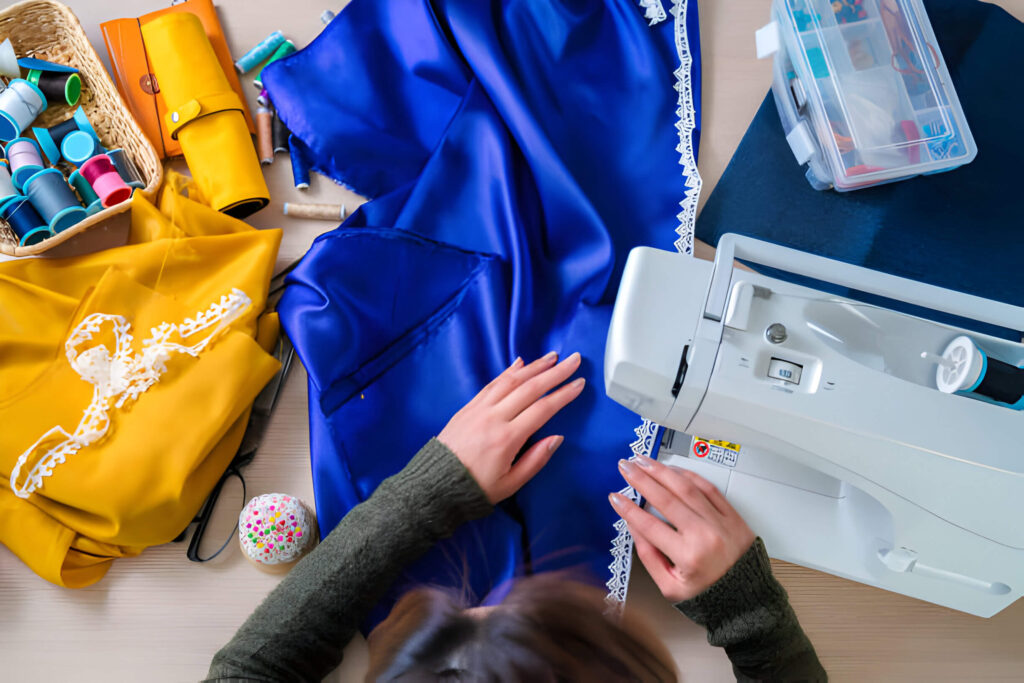
Although not mandatory, establishing an LLC can protect from personal liability, boost professionalism and credibility, and aid in segregating personal and business finances. Nevertheless, establishing and overseeing an LLC requires costs and documentation, therefore, it is advisable to seek guidance from a legal or business consultant to ensure the optimal choice. Starting as a sole proprietorship can work at first, with the possibility of switching to an LLC as your company expands.
Step 5: Design Your Heart Out
Defining your brand’s identity is essential to differentiate yourself in the competitive fashion industry, as it establishes your distinct traits like style, purpose, and customer base, and acts as the basis for your creative work. Begin by drawing out your ideas on paper to see and make changes to your concepts.
Utilize tools to generate product mockups and visualize your designs in realistic environments, that can be incorporated into your online store. Work together with a designer or manufacturer to create physical prototypes or samples from your sketches, adjusting as needed during the process. If you are unfamiliar with any designers, websites like Fiverr offer the option to hire an experienced designer for as low as $5.
Step 6: Find a Clothing Manufacturer
Find a clothing manufacturer by evaluating various companies, and comparing their prices and abilities. To locate a clothing manufacturer for your clothing brand, follow these instructions:
- Identify your requirements for production. Determine your production needs, such as the specific clothing items you plan to make, the amount you require, and the timeline you aim to meet.
- Research. Examine various Print Provider ratings to find potential manufacturers. Alternatively, you can utilize online directories, industry publications, or recommendations from fellow clothing designers.
- Request samples of products. After pinpointing some potential manufacturers, purchase product samples to evaluate their printing quality.
Step 7: Ensure the Quality of Your Product
Make sure the quality of your clothing meets your standards by carefully ordering samples and inspecting every piece before starting a clothing brand and selling. Search for flaws like loose threads, seams out of alignment, or imperfections in the fabric or printing to detect and address problems at an early stage.
Test the durability of the samples by wearing and washing them to determine if they meet the expectations of your customers over time. Have friends, family, or customers try the samples and give feedback on the comfort and fit to verify the fit. Finally, assess the materials to verify they are of superior quality, such as the fabric, threads, buttons, and zippers.
Step 8: Choose a Sales Channel
Selecting a sales platform is crucial when starting a clothing line, as it dictates how you connect with customers and distribute your merchandise. Different options for selling products are accessible, such as online marketplaces, eCommerce platforms, and your website.
Platforms provide a platform to reach a wide range of customers but come with fees and competitors. Shopify and Etsy offer tools to run your online store but require technical knowledge. Designing your own eCommerce platform allows you to have complete authority over your online image and customer interactions, aiding in brand development and forming direct connections with customers, despite requiring a substantial investment of time and resources.
In the end, determining the appropriate sales channel relies on your business objectives, financial resources, and specific customer demographic, making it essential to thoroughly investigate and evaluate different alternatives to determine the most suitable choice for your requirements.
Step 9: Price Up Your Products Right
It is essential to strike a balance between profitability and appealing pricing for customers to ensure your success when you start a clothing company. Begin by conducting market and competitor research to determine a reasonable and sustainable price range, to increase the catalog price by a minimum of 40%.
Take into account all your costs from production and sales, such as materials, labor, and overhead expenses, to establish the lowest price required to generate a profit. Experiment with various prices using tools to analyze their impact on sales and customer feedback.
Depending on performance, shifts in demand, competition, or expenses, modify your prices accordingly. Furthermore, you can provide complimentary shipping by incorporating shipping expenses into the product’s price, since customers are more willing to spend $69 on a personalized hoodie rather than $59 plus an additional $10 for shipping.
Step 10: Begin Marketing and Selling Your Custom Apparel
Generate awareness and attract attention to your brand by crafting a marketing strategy that defines your objectives, demographic focus, and methods for marketing your apparel collection.
Develop a distinct and cohesive brand image that captures the core of your clothing collection and sets it apart from rivals, incorporating features such as your logo, color scheme, communication style, and visual style. Interact with your audience through social media, email marketing, and your website to establish connections and cultivate a community centered on your brand, obtaining valuable information about their desires and requirements to boost sales and customer loyalty.
Partner with influencers who resonate with your brand and have a fan base of potential customers to assist in promoting your clothing line and generating interest. Provide promotions and discounts, including website deals, special deals for new customers, and referral programs, to incentivize customers to buy your clothing.
How Much Does It Cost To Start A Clothing Line?
The cost to launch a clothing brand can range from $550 to $11,000, depending on who you choose to partner with. It will most likely cost you between $30,000 and $55,000 if you’re an established designer.
Again, it depends on a variety of things in your business plan. Are you an individual hoping to launch a small clothing business and make waves in the fashion industry? Then, your expenses will be reduced.
It might, however, cost a lot more for a successful clothes brand if you’re an enthusiastic startup with big plans. In any case, it’s a factor you should consider before entering the fashion world.
How Profitable Is A Clothing Line?
If you intend to make a clothing brand, it shows great potential. Having a market value of $1.71 trillion could result in an annual revenue of approximately $2.46 million with a gross margin of 40%.
Based on this data, you can expect to see a profit on your investment in just seven months, particularly if you are making $82K in profit each month. In general, the performance of your clothing brand also relies on your dedication and understanding of it. By continuing to persist with these efforts, you can guarantee a profitable outcome for this clothing brand.
Can You Start A Clothing Line Business Without Being A Designer?
If you have a strong concept for your slow fashion brand but lack a fashion background, don’t be discouraged from pursuing your dream of getting a clothing line started. Numerous thriving clothing brands are established by entrepreneurs who prioritize business elements over creative design.
You can work with independent designers or design companies to make your own clothing line. You can also choose to purchase pre-made designs from suppliers or producers that provide customization choices.
By emphasizing market research, brand identity, manufacturing partnerships, and successful marketing tactics, it is possible to start a clothing brand that satisfies consumer needs and stands out in the competitive fashion market, regardless of lacking design expertise.
What Type Of Clothing Sells The Most?
The most popular clothing items depend on fashion trends, seasonal choices, and consumer demographics. In most cases, essential things such as t-shirts, jeans, and casual clothing typically experience steady demand all year round. Nevertheless, athleisure wear, sustainable fashion, and gender-neutral clothing have been becoming more popular in recent years.
Furthermore, clothing pieces that provide comfort, versatility, and affordability tend to excel. Ultimately, when you make a clothing line, success depends on knowing your target market’s preferences and being adaptable in adjusting to shifting consumer tastes and industry trends.
Launch Your Clothing Line Today!
If you ask “How to make a clothing company?”, this detailed guide has provided you with the necessary steps to successfully move through this process, starting from discovering your specific market to establishing a dedicated group of customers. Keep in mind, that achieving success depends on a solid brand identity, top-notch production, and a strategic marketing strategy.
By utilizing our B2B manufacturing knowledge and following these steps, you can transform your fashion aspirations into a successful venture. We’re here to assist you through every single stage to create a clothing brand. Get in touch with us today to talk about your clothing line and find out how we can make your ideas a reality.

